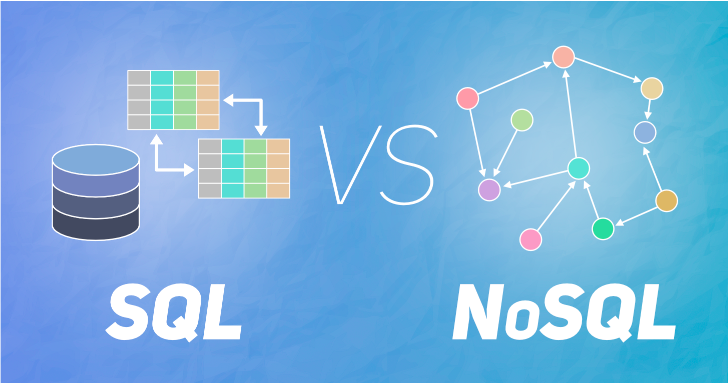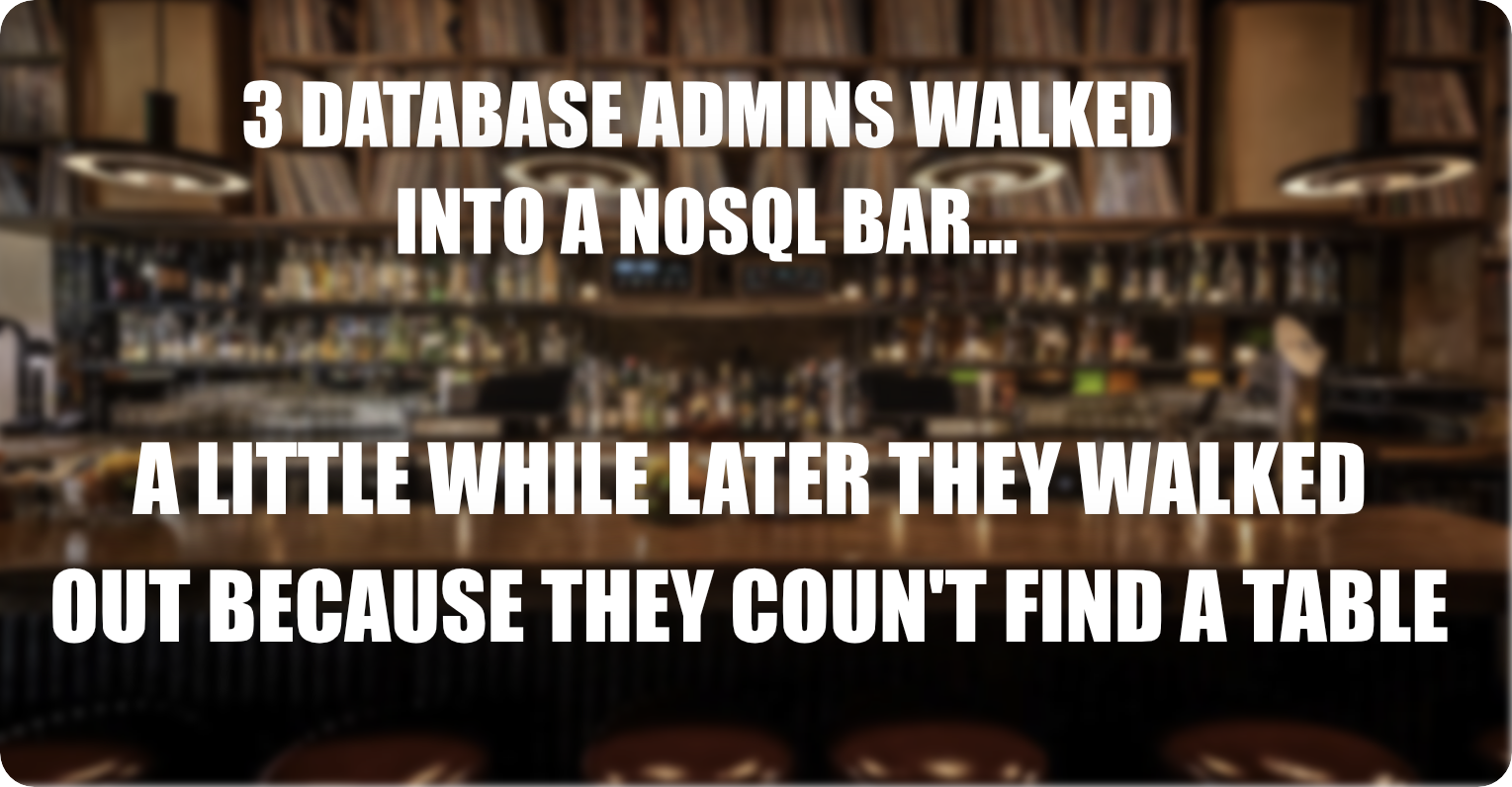To be, or not to be: that is the question!
Shakespeare was probably not thinking about databases when he wrote this line but this is still the critical question most companies face these days. The biggest decision when it comes to choosing a database is picking a relational database (SQL) or a non-relational (NoSQL) database. While a relational database is a viable option most times, it is unsuited for large datasets and big data analysis. This is the major reason for the popularity of the NoSQL database systems in major Internet companies like Google, Yahoo, Amazon, etc.
However, the decision to choose a database is not that simple (what is really?!!). Both the SQL and NoSQL databases have different structures and different data storage methods. So the choice between SQL vs NoSQL essentially boils down to the type of database that is required for a particular project.
What’s so different?
Both SQL and NoSQL databases serve the same purpose i.e. storing data but they go about it in vastly different ways. There are multiple differences between the SQL and NoSQL databases and it is important to understand them in order to make an informed choice about the type of database required.
Keeping that in mind, some of the important differences between the SQL and NoSQL databases are given as follows:
1. Language:
Let’s imagine that in the database world, everyone speaks X Language. So it would be quite confusing if you started speaking Y language in the middle of that. This is the case with SQL databases. The SQL databases manipulate the data based on SQL which is one of the most versatile and widely-used language options available. While this makes it a safe choice especially for complex queries, it can also be restrictive. This is because it requires the use of predefined schemas to determine the structure of data before you work with it and changing the structure can be quite confusing (like using Y language).
Now again imagine a database world where multiple languages like are spoken. While this world would be a little chaotic, speaking Y language would be fine because you would be sure to find a fellow idiot! This is a NoSQL database that has a dynamic schema for unstructured data. Here, data is stored in many ways which means it can be document-oriented, column-oriented, graph-based, etc. This flexibility means that documents can be created without having a defined structure and so each document can have its own unique structure.
2. Scalability
Think about a tall building in your neighborhood. If given the option, would it be better to add more floors in this building or create a new building entirely for more residents?
This is the problem for SQL and NoSQL databases. SQL databases are vertically scalable. This means that the load on a single server can be increased by increasing things like RAM, CPU, or SSD. (More floors can be added to this building). On the other hand, NoSQL databases are horizontally scalable. This means that more traffic can be handled by sharding, or adding more servers in your NoSQL database. (More buildings can be added to the neighborhood).
In the long run, it is better to add more buildings than floors as that is more stable (Less chance of creating a Leaning Tower of Pisa!!!). Thus, NoSQL can ultimately become larger and more powerful, making NoSQL databases the preferred choice for large or ever-changing data sets.
3. Schema Design
A schema refers to the blueprint of a database i.e how the data is organized. The schema of an SQL database and a NoSQL database is markedly different. Let’s use a joke to better understand this.
This basically means that the poor database admins couldn’t find a table in NoSQL because there is no standard schema definition for NoSQL databases. They are either key-value pairs, document-based, graph databases or wide-column stores depending on the requirements. On the other hand, if those database admins had gone to a SQL bar, they certainly would have found tables as SQL databases have a table-based schema.
This difference in schema makes relational SQL databases a better option for applications that require multi-row transactions such as an accounting system or for legacy systems that were built for a relational structure. However, NoSQL databases are much better suited for big data as flexibility is an important requirement which is fulfilled by their dynamic schema.
4. Community
SQL is a mature technology(Like your old but very wise Uncle) and there are many experienced developers who understand it. Also, great support is available for all SQL databases from their vendors. There are even a lot of independent consultants who can help with the SQL database for very large scale deployments.
On the other hand, NoSQL is comparatively new(The young and Fun Cousin!) and so some NoSQL databases are reliant on community support. Also, only limited outside experts are available for setting up and deploying large scale NoSQL deployments.
The Big Questions!!!
NoSQL is a recent technology compared to SQL. So naturally, there are lots of questions in regards to it especially in the context of big data and data analytics. Some of the major questions relating to this are addressed below:
Is NoSQL faster than SQL?
In general, NoSQL is not faster than SQL just as SQL is not faster than NoSQL. For those that didn’t get that statement, it means that speed as a factor for SQL and NoSQL databases depends on the context.
SQL databases are normalized databases where the data is broken down into various logical tables to avoid data redundancy and data duplication. In this scenario, SQL databases are faster than their NoSQL counterparts for joins, queries, updates, etc.
On the other hand, NoSQL databases are specifically designed for unstructured data which can be document-oriented, column-oriented, graph-based, etc. In this case, a particular data entity is stored together and not partitioned. So performing read or write operations on a single data entity is faster for NoSQL databases as compared to SQL databases.
Is NoSQL better for Big Data Applications?
They say “Necessity is the Mother of Invention!” and that certainly turned out to be true in the case of NoSQL. The NoSQL databases for big data were specifically developed by the top internet companies such as Google, Yahoo, Amazon, etc. as the existing relational databases were not able to cope with the increasing data processing requirements.
NoSQL databases have a dynamic schema that is much better suited for big data as flexibility is an important requirement. Also, large amounts of analytical data can be stored in NoSQL databases for predictive analysis. An example of this is data from various social media sites such as Instagram, Twitter, Facebook, etc. NoSQL databases are horizontally scalable and can ultimately become larger and more powerful if required. All of this makes NoSQL databases the preferred choice for big data applications.
And Finally the Conclusion!!!
The choice between SQL and NoSQL depends entirely on individual circumstances as both of them have advantages as well as disadvantages. SQL databases are long established with fixed schema design and a set structure. They are ideal for applications that require multi-row transactions such as an accounting system or for legacy systems that were built for a relational structure.
On the other hand, NoSQL databases are easily scalable, flexible and simple to use as they have no rigid schema. They are ideal for applications with no specific schema definitions such as content management systems, big data applications, real-time analytics, etc.






